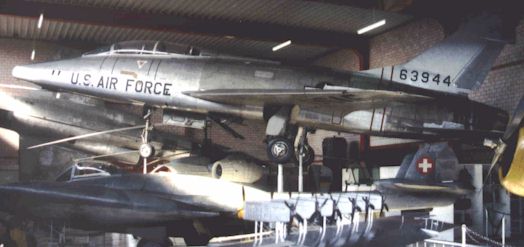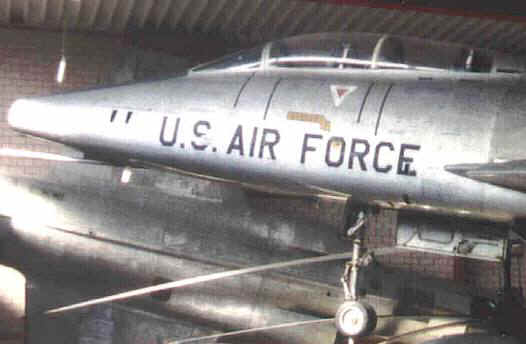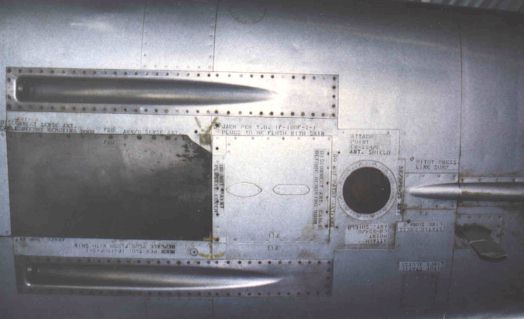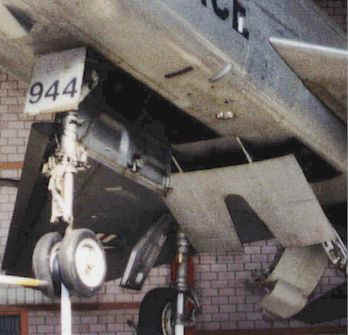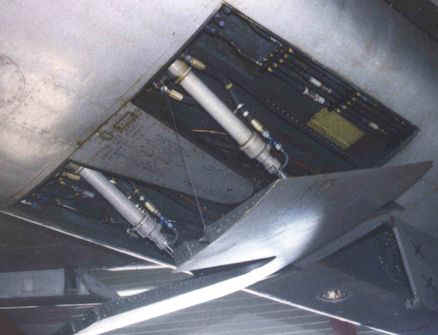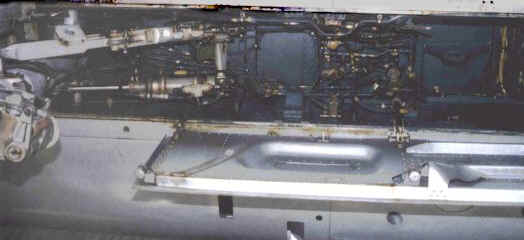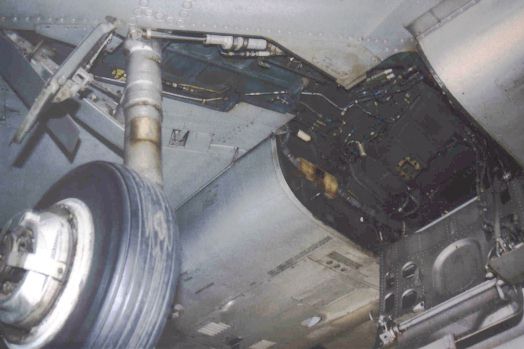by Frank Spahr
Part II
In the first part of this account we took a closer look at Hermeskeil museum’s preserved English Electric Lightning F.2A, along with a selection of other exhibits. Continuing our trip through the museum’s vast collection of aircraft, we will focus this month on the F-100 Super Sabre.
The F-100
The North American F-100 Super Sabre, nicknamed the Hun, designed as a replacement for the F-86 Sabre, was the first plane in the legendary Century Series. It was the world´s first production airplane capable of exceeding the speed of sound in level flight, a major step ahead in fighter development. Between the prototype´s maiden flight on May 25, 1953 and the closing of the production line in 1959, a total of 2294 Super Sabres were built.
Stability problems with early F-100As were overcome by enlarging the vertical stabilizer and redesigning the wing geometry in the C-series. More than half of the F-100s built belonged to the most advanced D-series which featured the first autopilot designed for a supersonic jet plus a low-altitude bombing system. It was also capable of delivering nuclear weapons. The most prominent external feature for distinguishing A-C series aircraft from Ds is the large fairing near the top of the vertical stabilizer housing a tail warning radar.
The F-100 was powered by a P&W J57-P-21A engine, rated at 7,711 kp thrust. Top speed was Mach 1.31 at 35,000 ft. Armament consisted of four 20mm cannons plus up to 3,402 kg external stores, including nuclear or conventional bombs, rockets, four Sidewinder air-to-air or two Bullpup air-to-ground missiles mounted on six underwing pylons.
The Super Sabre saw extensive combat in Vietnam, mainly in the ground attack role. The USAF´s aerobatic team, the Thunderbirds, flew F-100s between 1956 and 1964. The last F-100 was phased out of service with the Indiana ANG in November 1979. Several countries purchased The aircraft, large customers being France, Denmark, Turkey and Nationalist China.
The USAF needed also a supersonic trainer and North American began with converting an F-100C for evaluation as a private venture. The final F-100F model, which first flew on 7 March 1957, was based on F-100D, retaining its air-superiority and fighter-bomber capabilities although the armament was reduced. Over 300 F-100Fs were built.
Later on, some F-100Fs were converted to ground attack role. These aircraft were nicknamed Wild Weasel I.
North American F-100F Super Sabre in Detail
On entering the museum´s main exhibition hall, you´re standing right under an F-100´s impressive and distinctive snout. The plane is suspended from the ceiling, a method of display that saves the museum´s valuable space as well as giving the modeller a unique bottom view of one the most legendary jets.
This photo is full of other aircraft. Visible are a Swiss de Havilland Venom FB.4, a formerly East German Kamov Ka-26 Hoodlum, a Schneider Grunau Baby IIB glider suspended even higher, a large–scale model of the Dornier Do X gargantuan flying boat, an RF-104G with all paint flexed off suspended sideways from the wall, plus a North American AT.6F Harvard. Can you spot them all on this picture? 🙂 Photo: Frank Spahr
The museum´s example has an all-metal finish, but various camouflage schemes were also carried during the long operational carrier of the aircraft.
This shot is the closest I could get of the two-seater cockpit and extended fuselage nose. The F-100F was essentially an F-100D stretched for two crew members. Photo: Frank Spahr
The lower side of the massive fuselage looks busy. From the front: nose probe, gun ports, nose undercarriage, deployed airbrake, main undercarriage. Photo: Frank Spahr
This is the lower part of the nose just beneath the front cockpit. Of note is the amout of stencil instructions concentrated in this small area.
The F-100Fs armament consisted of only two M-39 20 mm cannons with 175 rounds each, as opposed to 4 cannons of the F-100D. Photo: Frank Spahr
This view shows more detail of the front undercarriage leg (apologies for it being slightly out-of-focus) as well as the airbrake in open position. Photo: Frank Spahr
Internal detail of the open airbrake can bee seen on this photo taken from the rear. Photo: Frank Spahr
A glimpse into the front wheel well. Interior areas this cluttered with plumbing and cables leave plenty of possibilities for a superdetailing modeller. Photo: Frank Spahr
An aircraft mounted so high up allows for easy shots of the undercarriage details. This is an overall view of starboard main undercarriage assembly, facing aft. Photo: Frank Spahr
This article was originally published in IPMS Stockholm Magazine in July 1999.
